What Is Pull Up Leather, Anyway?

Expert Verified By: Nolan Walsh, CEO & Creative Director, Thursday Boot Company & Michael Batson, Vice President, North Star Leather
“Pull-up” is a term used to describe leather that’s normally found on more hardwearing and casual boots. There are two reasons why: it makes for more waterproof leather and it adds a lot more depth and dynamism to the color; two qualities that usually aren’t wanted in dress boots.
So what is it? To answer this question, we spoke to two experts: professional leatherworker Michael Batson of North Star Leather, and the CEO of Thursday Boot Company, Nolan Walsh. Here’s the low down on pull up.
Key Takeaways: Pull Up Leather
Pull up leather is packed with extra oils and/or waxes that adds durability and depth of color. When bent or folded, it creates a two-tone effect when the oils move.

What is Pull Up Leather?
“Pull up is a finishing technique, not strictly speaking a type of leather,” explains Walsh. “Any kind of leather can be pull up.”
I’ve handled pull up made from all sorts of animals; it’s not about the type of animal or the composition of the tannins.
“Pull up is also unrelated to grain,” says Batson, referring to the ‘full grain’ and ‘corrected grain’ nomenclature used to describe how much the ‘skin side’ of the leather has been sanded down. “Chromexcel and Copper Rough & Tough are popular pull up leathers that are both lightly corrected, but plenty of leathers with pull-up are full grain.”
A leather becomes “pull up” by having hot oil and/or wax infused into it toward the end of its production process. There are two primary benefits:
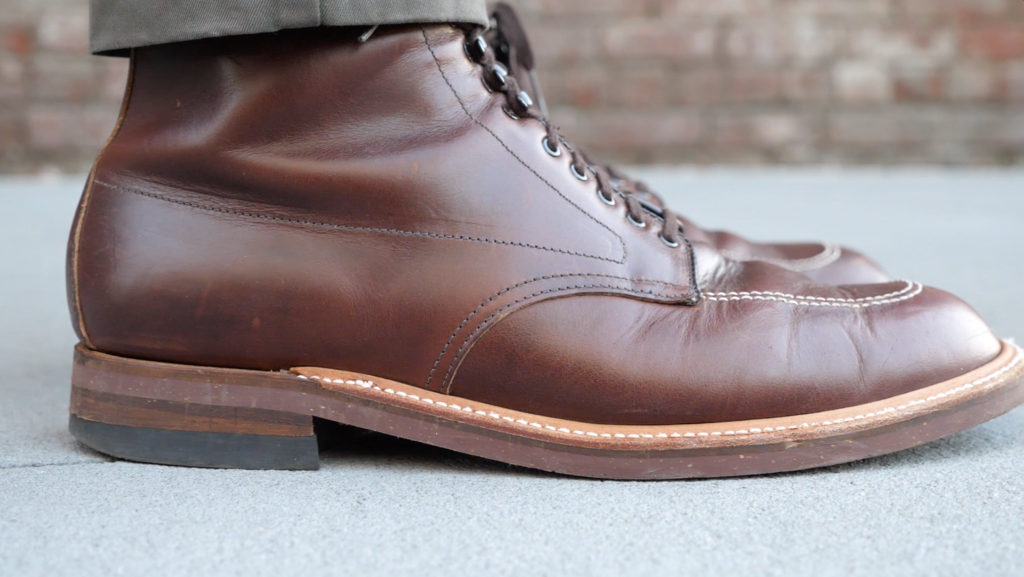
Pull Up Leather Is More Durable and Waterproof
Oil and wax are hydrophobic and they keep the leather moist.
Moist leather lasts longer, which is why you should condition your boots. The extra moistness means pull up needs less conditioning than a lot of dressier leathers, which is another reason it makes for a more durable boot.
To be clear, there are plenty of other ways to make leather resistant to moisture: inexpensive waterproof boots often have a silicone coating, for example. But those kinds of boots don’t share the next quality of pull up:

Pull Up Leather Has More Color Depth
Pull up leather looks great. It’s a primo leather for guys who want their boots to develop patina, often defined as “desirable qualities of aging.” (Old leather looks cooler than new leather, you know what I mean.)
The waxes and/or oils move around the leather as it’s worn, creating a “two tone” effect in the color that produces highs and lows. And while pull up leather looks cooler every day, you don’t have to wait months to see the two-tone effect.
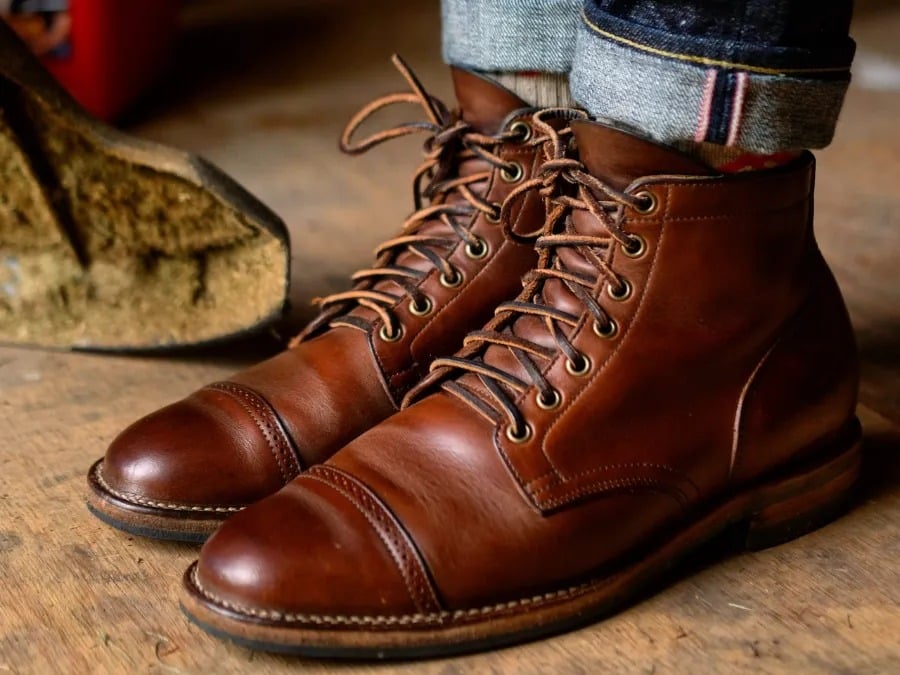
I should note here that the dynamic color and rugged personality of pull up leather is why it’s not usually seen on more formal footwear.
[Related: Vegetable tanne vs chrome tanned: which leather is best for your boots?]
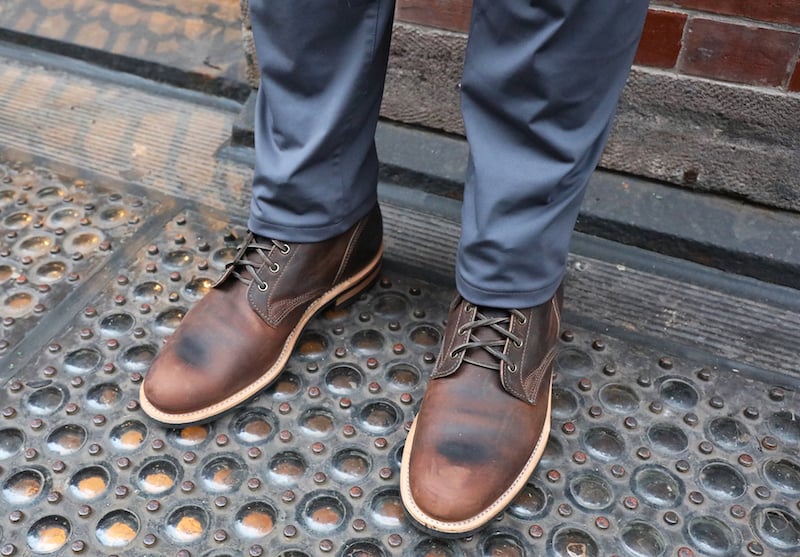
How is Pull Up Leather Made?
The magic that makes a leather pull up comes after the hide has been softened and dyed at the tannery.
Pull up leather is packed with oils and waxes, adding a depth of color while allowing waxes to permeate the top grain, resulting in a leather that develops a richly textured patina.
Nolan Walsh, CEO & Creative Director, Thursday Boots
The magic words are “hot stuffing.” Heated oil, wax, and/or grease is forces into the hide, coating the fibers. Usually the leather is then dyed again using a process called an aniline finish.
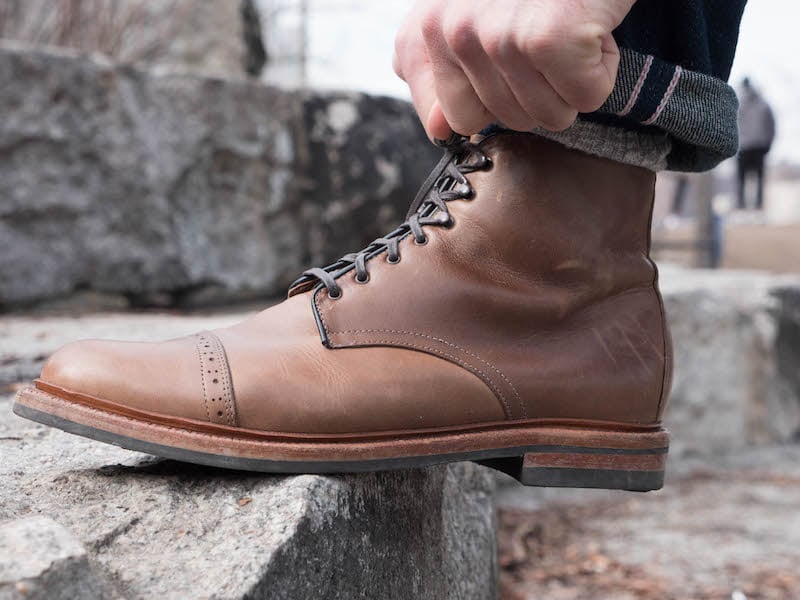
How Can You Recognize Pull Up Leather?
There’s a lot of variety under the umbrella of “pull up.” Chromexcel is the best known pull up leather, while the Rough & Tough leathers at Red Wing are actually nubuck with a pronounced pull up effect.
Sometimes the effect comes from waxes alone, sometimes oil, sometimes both. The strength, softness, touch, stretchability, and grain tightness will vary between products.
Pull-up leather is recognizable by its unique dual-layer finish that create a high-contrast, dynamic look, with pronounced highs and lows that emerge especially when the leather is manipulated or bent.
Nolan Walsh, CEO & Creative Director, Thursday Boots
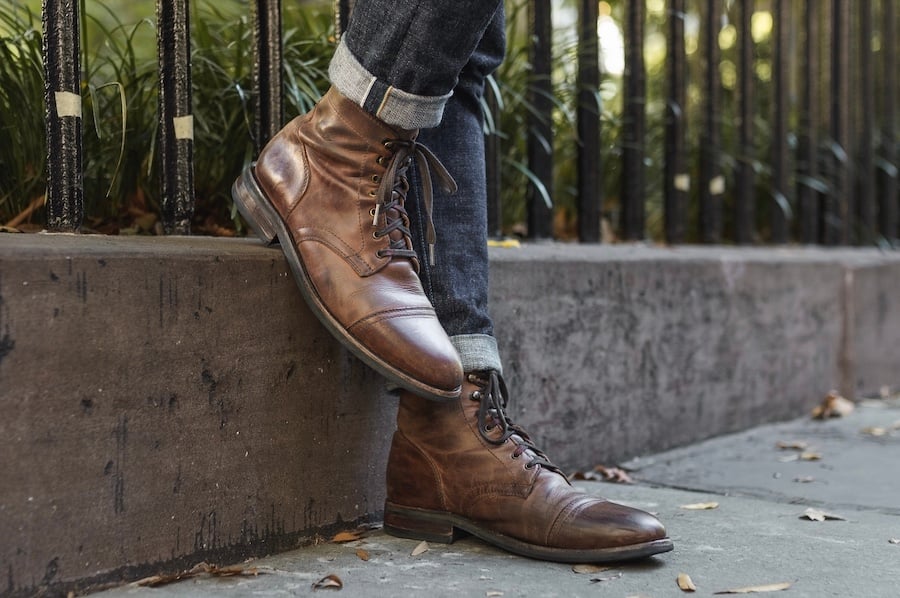
Pull up leather also comes in a variety of colors and shades. Stretching a darker chocolate leather, for example, will create a rust colored stressed area. The quantity of oil and wax can also affect the tonal contrast between the leather and stress lines.
One important thing to note: black leather won’t usually have a two-tone effect, even if it’s a pull up leather. This is a downside of black leather boots; they don’t age that dynamically because there just isn’t much color or dynamism in black.
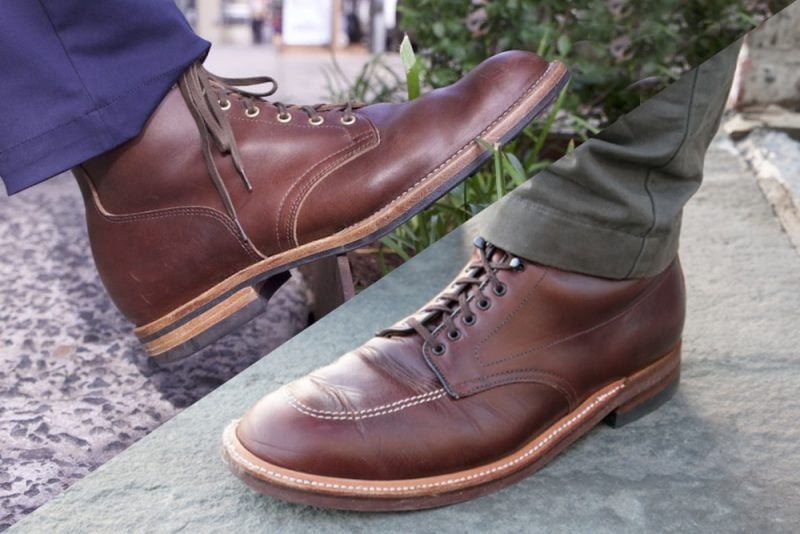
Is Pull Up Leather a Suitable Material for Boots?
- It’s ideal for boots because it’s super durable and it handles inclement weather well
- It’s not ideal for formal boots, as it has a very rugged look
- It’s not ideal for ASTM rated work boots, as it’s not the most waterproof leather
There are a wide variety of boots constructed from pull up leather. We have written a lot about the versatility of Chromexcel, a type of pull up developed by Horween Leather Company that’s more or less the most popular leather for American casual boots. You can find it on $199 Thursday Boots and four-figure Japanese boots. Everyone loves it.
Is pull up leather ideal for dress boots? Probably not: the two-tone effect is beautiful but casual, and while you could opt for a black pull up leather that wouldn’t have this effect, it’d be more matte in appearance than the slightly shiny effect people expect on formal shoes. You should look at box calf leather instead.
Is pull up leather ideal for work boots? Actually, probably not: if we’re talking about the kind of steel toe, ASTM-rated boots demanded by jobsites, then you honestly don’t need such high quality and artfully tanned leather and you probably want a leather that’s more waterproof, like something finished with silicone waterproofing spray.
But for casual (or light duty) boots, pull up leather is king.
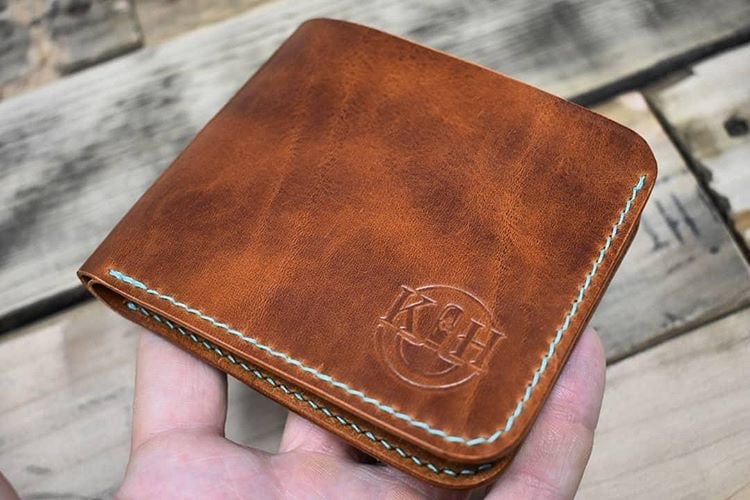
How Do I Care for Pull Up Leather?
- Don’t worry too much about boot care; pull up leather is low maintenance
- Give them a clean and conditioning with something like Cobbler’s Choice or Venetian Shoe Cream a couple of times per year
Boots with a pull up finish are low maintenance because the tanning process has already filled leather with oil (and/or wax, you know the drill).
This usually makes it easy to manage scuffs: rub the scraped area vigorously with your thumb or a spoon to heat the oil/wax and move it around the leather, and the scratch will disappear (or become a lot less noticeable).
“Over time, the pull up will even out and the effect will be less pronounced,” says Batson. “You can accelerate that process if you condition too often, which is why I condition pull up leather boots with a light conditioner and only when they’re very dry to the touch. If you apply too much oil, you saturate the leather and there won’t be as much color change.”

Examples of Pull Up Leather
We asked Batson, Walsh, and leatherworker Tucker Gasho for their favorite pull up leathers. Here’s a list!
- Chromexcel (Horween Leather Company): A slightly corrected combination tanned leather that is perhaps the most beloved casual boot leather on Earth.
- Dublin Veg Tan (Horween Leather Company) 100 percent vegetable tanned leather that has a pull up effect.

- Copper Rough & Tough (SB Foot): “It has a considerably more dramatic pull up than Chromexcel,” says Batson.
- Oro Legacy (SB Foot): Famous for comprising the upper of the Red Wing 875 Moc Toe, it has a very subtle pull up to it and this effect isn’t considered a signature of the leather — this is a good example of a leather that’s technically pull up, but it’s not that dramatic.
- Waxy veg tan (Badalassi Carlo) Another vegetable tanned leather with a slight pull up effect; this Italian tannery makes some of the world’s most beloved veg tan boot leathers.

Wrapping Up
It’s not just boots: bags, wallets, and belts all benefit from a pull up effect, especially if you’re looking for stuff that is casual and rugged.
“Pull-up leathers are great for boots but I think they’re really great for turned leather bags: totes, messenger bags and backpacks that you sew and then turn inside out,” says Batson. “The pull up just creates the greater effect because of the stress of turning it.”
However you intend to use pull up leather, know that it’s well made, longlasting, and will only improve with age. Just don’t try to dress it up too much!
Our Experts
- Nolan Walsh, CEO & Creative Director | Thursday Boot Company
- Michael Baston, Vice President | North Star Leather
- Tucker Gasho, Owner | K&H Leatherworks



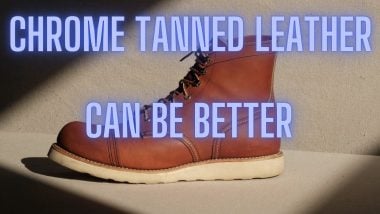



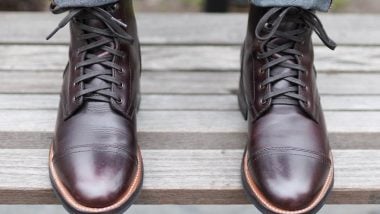


Join the Discussion